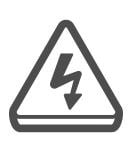When internal workings of a computer are exposed it is possible to damage the computer with static electricity held by the human body.
Whenever the casing of a computer is opened and its internal workings are exposed to change a hard drive or add memory chips for example there is a danger of damaging the computer with the buildup of static electricity that is held by the human body.
In this definition...
Internal computer parts are susceptible to static electricity
The internal workings of a computer, and especially the hard drive, are extremely susceptible to static electricity, which can cause considerable damage to the hard drive if it is zapped with even a small amount. Microchip damage can occur if it is exposed to static electricity as low as 10 volts, and humans are not able to perceive static electricity until it has reached about 1,500 volts.
Walking across a rug can produce a static electricity voltage of up to 12,000 volts, but static voltage is not life threatening. So it is possible to damage a hard drive with static electricity that is not even felt by the person because it is at such a low voltage. Also, computers become increasingly susceptible to static electricity damage as more and more circuitry is built into them.
Static electricity explained
Static electricity is caused by a process called triboelectrification. Everything around us, and including us, is made of atoms, and every atom has in its center (nucleus) positively charged protons and neutrons, which have no electrical charge. Surrounding the atom are negatively charged electrons. The protons and neutrons in an atom do not change, but the electrons can move from one atom to another. When two objects touch, they exchange electrons, which causes one object to become electrically positive and the other to become electrically negative. When an object touches another object with either an opposite or neutral charge, electrons flow. Static electricity is created when electrons move back and forth between atoms.
Avoid zapping components
 To avoid zapping your components with static electricity, take precautions to ground the static electricity before touching any of the internal components of the computer. Wearing an ESD wrist strap or working on an anti-static mat will prevent any static electricity from damaging your computer. Another way to ground the static electricity is to touch the internal metal frame of the computer’s case while the computer is plugged into an electrical socket. The static electricity will be discharged and grounded as the electrical circuit is grounded via the AC outlet. Also, if you work on PCs often, consider using a humidifier to help control static electricity in the room and do not work where you need to stand on carpet or rugs. Always handle the electronic circuitry on the motherboard, video card, modem, sound card, hard drive and other internal components by any insulated, non-circuitry areas to insure that you do not send a bolt of static electricity coursing through it.
To avoid zapping your components with static electricity, take precautions to ground the static electricity before touching any of the internal components of the computer. Wearing an ESD wrist strap or working on an anti-static mat will prevent any static electricity from damaging your computer. Another way to ground the static electricity is to touch the internal metal frame of the computer’s case while the computer is plugged into an electrical socket. The static electricity will be discharged and grounded as the electrical circuit is grounded via the AC outlet. Also, if you work on PCs often, consider using a humidifier to help control static electricity in the room and do not work where you need to stand on carpet or rugs. Always handle the electronic circuitry on the motherboard, video card, modem, sound card, hard drive and other internal components by any insulated, non-circuitry areas to insure that you do not send a bolt of static electricity coursing through it.
Monitors and static electricity
An important exception to this rule is when working inside monitors. You should not ground yourself before working inside a monitor. Monitors store electricity in capacitors, and by grounding yourself you will provide a conduit for the voltage to discharge through your body. Only a trained professional using the proper equipment should ever attempt to work inside of a computer monitor. An older CRT monitor stores enough electricity in its capacitors to be lethal if released, often tens of thousands of volts. Even with the power off and/or the monitor disconnected from a power source, the monitor retains an extremely high electrical charge.
UPDATED: This article was lasted updated April 2, 2021 by Web Webster.

